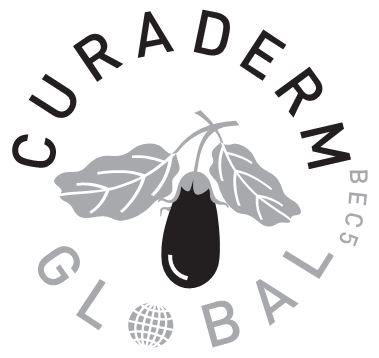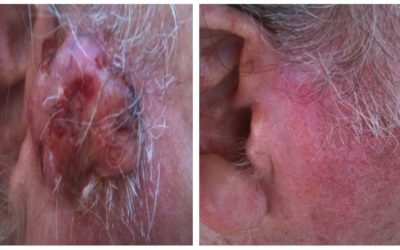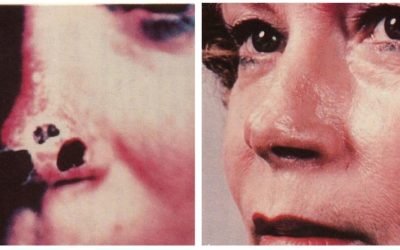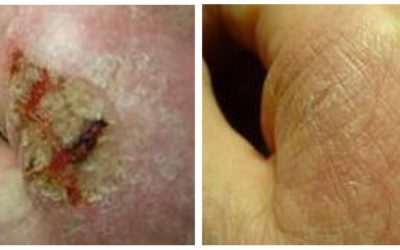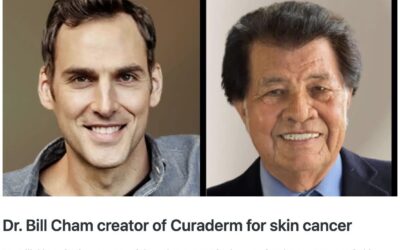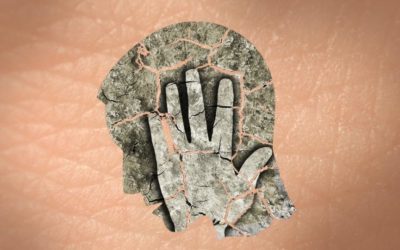BEC
in
Curaderm
Gold Standard Treatment for Skin Cancer
The only treatment that removes ALL cancer cells without removing ANY normal skin tissue resulting in remarkable cosmetic outcomes.
In 1987, Bill Elliot Cham PhD, reported that plant derived glycoalkaloids known as BEC (the initials of its discoverer) had remarkable anticancer effects in cell culture, animals and humans.
Interview to Dr. Jonathan V Wright on BEC for skin cancer
Scientific Publications
Years In Production
Granted patents on BEC
Curaderm
Our Signature Brand
It all started with our signature product Curaderm, a topical treatment for diseases of global health importance that causes substantial psychosocial impacts and requires considerable investment in terms of treatment and technologies.
Curaderm has been fully evaluated through evidence-based research and is supported by many independent refereed published scientific articles and books.
Curaderm is a topical treatment with keratolytic action and antineoplastic activity in the treatment and healing of localized basal cell carcinoma of the skin.
BEC in Curaderm is regarded as the Gold Standard for the treatment of skin cancer.
Cham, B.E. Gold Standard for Skin Cancer Treatment: Surgery (Mohs) or Microscopic Molecular-Cellular Therapy (Curaderm)? Journal of Cancer Therapy. 15, 33-47
CURADERM – *BEC5, ZYCURE
Curaderm, also known as BEC5 or Zycure contains the natural anti-cancer components BEC and is the only established drug that uses targeted therapy (also called precision medicine) to treat skin cancer.
About Curaderm
State Of The Art Research & Development
Curaderm Global in its ceaseless pursuit of excellence led us to establish a state-of-the-art R&D Facility at the University of Queensland and the Royal Brisbane Hospital in Australia.
OUR WORK
Our vision is to provide trusted products that significantly improve people’s health, dignity and well-being every day. We discover innovative natural medicines and develop these medicines into safe effective treatments for diseases.
HISTORY
Curaderm Global’s unique and strong range of products originate from Dr Bill Cham and his team’s extensive research and development of a natural plant product of the Solanaceous family, including the Devil’s Apple and Eggplant.
Curaderm Successfully Treats
Basal Cell Carcinoma
Curaderm, the Long-Awaited Breakthrough for Basal Cell Carcinoma. International Journal of Clinical Medicine. 11(10), 579-604.
The Pharmacology of Curaderm in the Treatment of Basal Cell Carcinoma. Clinical Medicine Review and Case Reports. 9, 399.
Doi: 10.23937/2378-3656/1410399
Keratosis
Cham, B.E.
Holistic Approach in the Treatment of Actinic Keratosis: Benefits and Disadvantages of 5-Fluorouracil, Imiquimod, Diclofenac and Curaderm. International Journal of Clinical Medicine. 14,319-331.
Doi: 10.4236/ijcm.2023.147027
Solasodine Glycosides: A Topical Therapy for Actinic Keratosis. A Single-Blind, Randomized, Placebo-Controlled, Parallel Group Study with Curaderm.
Squamous Cell Carcinoma in Situ
Solasodine Rhamnosyl Glycosides in a Cream Formulation is Effective for Treating Large and Troublesome Skin Cancers.
Keratoacanthoma
Glycoalkaloids from Solanum sodomaeum are effective in the treatment of skin cancers in man.
read more testimonials
- John (USA)
Dear Dr Cham, you are a genius and a saint. This cure has changed my life, not only for treating my BCC better than I had imagined, but for putting me back in touch with myself. I had grown accustomed to following the herd. Curaderm has taught me, once again, to think outside the box, and seek the truth that is best for me as an individual. Your cure is a breakthrough of such magnitude. The people who I have told this story to do not believe me! I thank you for this product and extend my sincerest gratitude to you. Everyone I come in contact with on this topic will know of Curaderm BEC5. Thanks again.
- Oncology Hospital, Moscow, Russia
Curaderm BEC5 is extremely effective and the observed clinical cosmetic effects are incomprehensible! CuradermBEc5 is ideally suitable for cancer patients. The cosmetic results after CuradermBEc5 treatment are comparable to the results after surgical and reconstructive treatments, but in cases such as localized tumour on the face,CuradermBEC5 is the treatment of choice. Treatment with Curaderm BEC5 is effective and works very fast amongst oncological patients with large tumours, there are no complications, treatments are very selective and destroy cancerous tissues only!
How Does Curaderm Work?
Cancer cells have a mutant protein on their outer structure, normal non cancer cells do not contain this abnormal mutant protein known as RBP. Curaderm interacts and enters these cancer cells and kills them by an organized type of cell death, known as apoptosis that doesn’t result in scar formation. Normal cells are not affected by this procedure and are not killed.
Pharmacovigilance – Care For Patient Safety
Improving patient care and safety is of paramount importance to Curaderm Global. Any medicines, no matter how safe and effective, can sometimes cause side effects.
Curaderm Global’s pharmacovigilance continuously evaluates information received from patients, healthcare professionals and members of the public ensuring the balance of benefits against risk
Scientific Publications
Prescribing Information
Featured Case Studies
Maurice
My doctors did not want to touch my skin cancer because it was too big and they told me that any treatment would cause me to lose my hearing. I started to treat the cancer with Curaderm and in the early stages of treatment I got concerned because it bled. I continued...
Iris
I would sell my house to save my nose anywhere in the world and it costed me next to nothing to remove my cancer virtually in my backyard using Curaderm.
James
I had a large skin cancer in the crease between my index finger and my thumb that affected the use of my whole right hand. The cancer was growing very fast and was painful. The doctors said surgery was the only way to get rid of this cancer and that several nerves in...
Outstanding Cosmetic Outcomes
Curaderm selectively and specifically seeks out and eliminates skin cancer cells from normal skin cells, which remain unaffected. Whilst the skin cancer cells are dying by the Curaderm therapy, the normal cells are alive, multiplying and replacing the dead cancer cells during treatment! Curaderm therapy results in apoptosis of the cancer cells, the white blood cells (phagocytes) mop up the remains of the dead cancer cells. This results in the replacement of the killed cancer cells with healthy normal skin cells during treatment. Consequently excellent cosmetic outcomes occur with little or no scarring.
view full gallery
The Origins Of Curaderm
The developed product Curaderm is available to the public for the treatment of actinic keratoses and nonmelanoma skin cancers. The superiority of Curaderm over existing treatments for skin cancers has been amply described.
During the developmental stages of Curaderm, the mode of action of BEC as an anticancer agent was established. With this knowledge it was shown that BEC had other topical applications resulting in treatments for psoriasis, melanoma, and a sunscreen that is not only a preventative, but also a diagnostic that eliminates solar keratosis. These three latter products will be available to the public in 2024.
Our History
Our Distributors
TAHOMA CLINIC DISPENSARY
HEALTH INTUITIVES
Curaderm Global distributors are located worldwide.
Highly motivated, responsible and ethical interested parties are welcome to join our distributorship.
FAQ
REGULATORY APPROVAL HISTORY
Curaderm has been approved by the European Decentralised and Mutual Recognition Health Authorities Systems for the indication: Topical treatment with keratolytic and antineoplastic actions in the treatment and healing of localized basal cell carcinoma of the skin.
WHAT IS CURADERM CREAM?
Topical Curaderm cream is a cream that contains BEC glycoalkaloids that specifically seek out and destroy precancer and cancer cells without harming non-cancer cells.
HOW DOES CURADERM WORK?
Cancer cells have a mutant protein on their outer structure, normal non cancer cells do not contain this abnormal mutant protein known as RBP. Curaderm interacts and enters these cancer cells and kills them by an organized type of cell death, known as apoptosis that doesn’t result in scar formation. Normal cells are not affected by this procedure and are not killed.
WHAT IS CURADERM USED FOR?
Curaderm is indicated for actinic keratosis, basal cell carcinoma and intraepidermal carcinoma (in situ squamous cell carcinoma).
BEC the active ingredient in Curaderm is used to treat the following skin conditions:
- Psoriasis
- Sunscreen, that prevents skin cancer formation and also treats sunspots
- Curage, a range of skin care products to complement healing of the skin
HOW SHOULD CURADERM BE USED?
Curaderm is a powerful medication and must be used exactly as directed.
Keep it in a secured area so other people cannot mistakenly use it to treat something else.
Curaderm is applied twice a day after washing with soap and plain water. A tiny amount of the cream should be gently applied to the visible lesions and covered with micropore dressing. Treatment periods depend on the type and size of the lesion, but should continue until healing occurs.
WHAT ARE THE RESULTS OF TREATMENT WITH CURADERM?
Curaderm cream frequently results in a mild to a severe stinging or burning sensation for several minutes, depending on the sensitivity of the skin and the severity of the lesion. Initially with Curaderm treatment, the lesion will appear to become bigger and after some time the lesion will reverse course and become smaller until it completely disappears.
Arrange for your health care professional to review you during treatment.
After you have completed the treatment, you may use the Curage moisturizer to speed-up the healing process.
WHAT IS SKIN CANCER?
Skin cancer is the most common form of cancer. It most often develops on skin exposed to the sun. But this cancer also occurs on areas of the skin not directly exposed to sunlight. It occurs when there is an irregular growth of skin cells. There are three major types of skin cancer – basal cell carcinoma, squamous cell carcinoma and melanoma.
WHAT IS A BASAL CELL CARCINOMA (BCC)?
BCC begins in the basal cells, a cell layer at the bottom of the epidermis, the outermost layer of the skin, that produces new skin cells as old ones die off. BCC occurs when a mutation occurs in the DNA of one or more basal cells. The process of creating new skin cells is controlled by the basal cell’s DNA. The DNA contains the instructions that tell the cell how to behave. A mutation can tell the cell to multiply more rapidly and continue to grow when it would normally die. For every normal cell, there is a time to live and a time to die. Roughly 50 billion cells are born and die each day in humans.
Under normal conditions, a programmed sequence of events, known as apoptosis, leads to the elimination of cells without releasing harmful substances into the surrounding area. Basal cells in the basal cell layer (stratum basale) of the skin, is also referred to as basal keratinocytes. Keratinocyte apoptosis plays a critical role in regulating epidermal development and restraining carcinogenesis.
Apoptosis balances proliferation to maintain epidermal thickness and contributes to stratum corneum formation. When basal cells are mutated, apoptosis may not work correctly, cells that should be eliminated may persist and become immortal, such as the case with BCC.
BCC starts when basal cells grow out of control and crowd out normal cells. In BCC, the process of apoptosis is defunct but cell division is intact resulting in excessive numbers of cancer cells, resulting in a change in the skin, such as a growth or a sore that will not heal.
With BCC, these lesion changes in the skin may express one of the following characteristics:
- A pearly white, skin-coloured or pink bump that is translucent. Tiny blood vessels are often visible. BCC often appears on the face and ears. The lesion may rupture, bleed and scab over.
- A flat, scaly, reddish patch with a raised edge often appears on the back or chest.
- A white, waxy, scar-like lesion without a clearly defined border, called morpheaform.
- A brown, blackish lesion with a slightly raised, translucent border.
WHAT IS An ACTINIC KERATOSIS (AK)?
Actinic keratosis (AK), also known as solar keratosis, is the most common pre cancer that forms on skin damaged by chronic exposure to ultraviolet (UV) rays from the sun and/or indoor tanning. AK is widespread, 58 million Americans have one or more AKs.
AKs often appear as small dry, scaly or crusty patches of skin, which may be red, white, pink, flesh toned, light or dark tan, or a combination of colours and are sometimes raised. Because of their rough texture, AK is often easier to feel than see.
AKs are found on the face, lips, ears, scalp, shoulders, neck, back of hands and forearms. Importantly, 5-10 percent of AKs turn into SCC.
WHAT IS A SQUAMOUS CELL CARCINOMA (SCC)?
Squamous cell carcinoma (SCC) of the skin is the second most common form of skin cancer. SCC begins in the squamous cells that make up the middle and outer layers of the skin. SCC occurs when a mutation occurs in the DNA of one or more squamous cells. The DNA contains the instructions that tell the cell how to behave. A mutation can tell the cell to multiply more rapidly and continue to grow when it would normally die. For every normal cell, there is a time to live and a time to die. Roughly 50 billion cells are born and die each day in humans. Under normal conditions, a programmed sequence of events, known as apoptosis, leads to the elimination of cells without releasing harmful substances into the surrounding area.
Mutation of the p53 gene results in inhibition of apoptosis of abnormal cells in all stages of SCC, starting at the precancerous lesion and advancing to the invasive and potentially metastatic forms. The pathogenesis of SCC is multifactorial consisting of extrinsic factors (such as UV sunlight exposure and industrial carcinogens) and intrinsic factors (such as age and immunosuppression).
Actinic keratosis is an initial observable precursor to SCC. Clinically, actinic keratoses are usually less than 1 cm, skin-coloured, red, brown, rough, sandpaper-like lesions. These precancerous lesions, if remain untreated, can continue to mutate and become SCC in situ. SCC in situ is a well-defined scaly plaque. Without treatment, SCC in situ can advance to form invasive SCC.
Invasive SCC invades into the dermis and may further invade fat, muscle, cartilage and bone. Metastasis to regional nodes with subsequent translocation to distant sites such as lungs and liver may then occur. SCC is composed of several variants, which are distinguishable, by histological assessment.
WHAT IS A MELANOMA?
Melanoma is a serious form of skin cancer that starts in cells known as melanocytes. A melanocyte is a specialized skin cell that produces the protective skin-darkening pigment melanin. Melanoma is more dangerous than other skin cancers because of its ability to spread to other organs more rapidly.
TRADITIONAL SKIN CANCER TREATMENT
There are eight types of standard treatment:
- Surgery
- Radiation therapy
- Chemotherapy
- Photodynamic therapy
- Immunotherapy
- Targeted therapy
- Chemical peel
- Other drug therapy
PHARMACOVIGILANCE- CARE FOR PATIENT SAFETY
Improving patient care and safety is of paramount importance to Curaderm Global.
Any medicines, no matter how safe and effective, can sometimes cause side effects.
Curaderm Global’s pharmacovigilance continuously evaluates information received from patients, healthcare professionals and members of the public ensuring the balance of benefits against risk
GRATUITOUS INDEPENDANT CASES IN VIDEO
Curaderm Cases Link
WHAT IS THE DIFFERENCE BETWEEN A SUN SPOTS, AGE AND LIVER SPOTS?
If you enjoy the sun and do not protect your skin, you may have experienced some changes in your skin tone as the years pass. You may notice you have more and more freckles on your
skin each time you go out into the sun. You may be among the many unknowing victims of sun spots.
If you want to treat these spots, you need to know exactly how and why these marks occur.
What is the primary difference between sun spots, age spots and liver spots?
Basically they can all appear the same on the skin, but are present for different reasons.
What do sun spots look like?
What is a sun spot?
When we refer to a sun spot, we are generally talking about Actinic Keratosis.
What is Actinic keratosis?
Actinic keratosis is a small, rough, raised area found on skin that has been in the sun for a long period of time. Some actinic keratoses may develop into a type of skin cancer.
What causes them?
Actinic keratosis is caused by being in sunlight.
You are more likely to develop this if you:
- Have fair skin, blue or green eyes, or blond or red hair
- Had a kidney or other transplant
- Take medicines that suppress the immune system
- Spend a lot of time each day in the sun (for example, if you work outdoors)
- Had many, severe sunburns early in life
- Are older
What are the symptoms?
Actinic keratosis is usually found on the face, scalp, back of the hands, chest, or other sun-exposed areas.
- They begin as flat and scaly areas.
- The colour may be grey, pink, red, or the same colour as the skin.
- Often, it has a white or yellow crusty on top.
- Later it develops a hard and wart-like or gritty, rough, surface.
- It may be easier to feel than see.
Treatment
If I eat eggplant, will it cure my cancer?
No. Eggplant does contain BEC it also contains inhibitors, and the unprocessed crude extract cannot effectively treat cancer. It is for the same reason why by ingesting devil’s apple no anti-cancer effects are observed.
Can I use an Eggplant crude extract in a tincture or cream to treat my skin cancer?
No. Eggplant does contain BEC, but it also contains inhibitors, and the unprocessed crude extract cannot effectively treat cancer.
Is Curaderm a conventional, orthodox medicine or a naturopathic eastern medicine or alternative medicine?
Curaderm is conventional and orthodox medicine.
